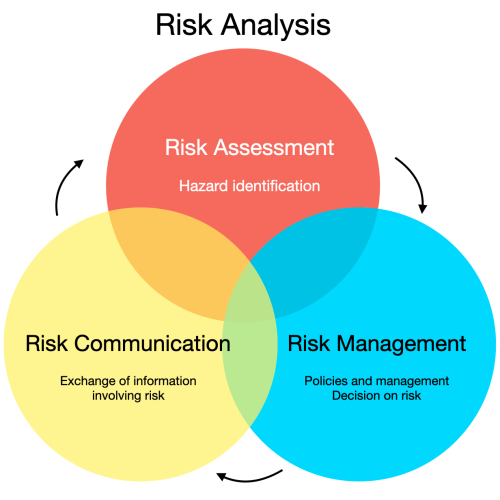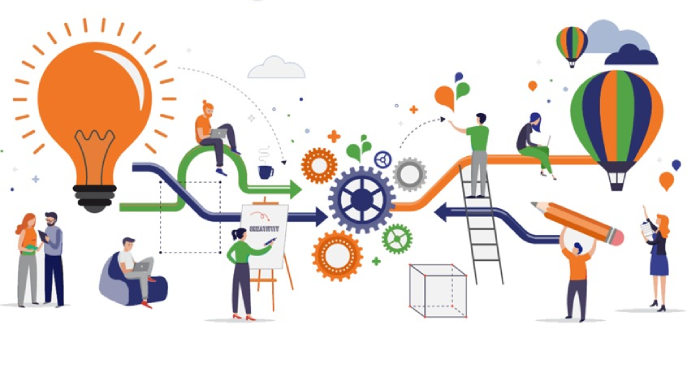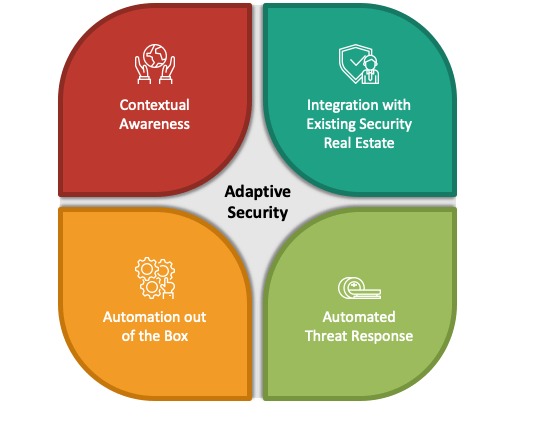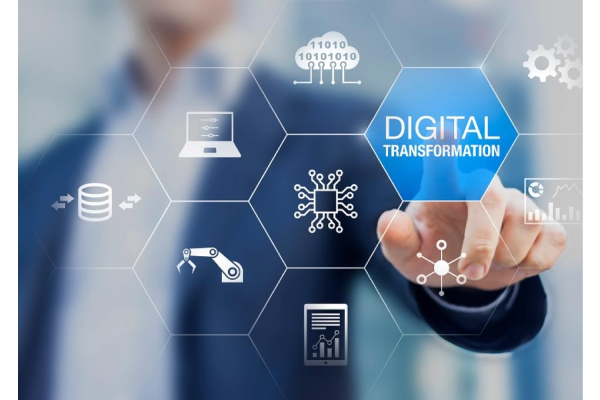Digital Transformation
Digital transformation refers to the integration of digital technology into all aspects of a business, fundamentally changing how it operates and delivers value to customers. It’s not just about implementing new technologies, but also about reshaping processes, strategies, and even organizational culture to leverage the opportunities that digital technologies offer.
Components Of Digital Transformation
Technology adoption
Digital transformation integrates AI, ML, big data, cloud, IoT, and blockchain for operational efficiency and innovation.
Data-driven decision-making
Digital transformation hinges on collecting, analyzing, and using data to inform decisions and streamline processes.
Customer-centricity
Digital transformation enhances customer experiences with personalized services, seamless interactions, and rapid issue resolution via digital platforms.
Agility and innovation
Digital transformation fosters agility and innovation through experimentation, prototyping, and continuous improvement, staying competitive.
Organizational change
Digital transformation success needs a cultural shift, upskilling, collaboration, and breaking down silos for cross-functional teamwork.
Risk management
Growing digital reliance mandates robust cybersecurity and risk strategies to safeguard data and ensure business continuity.
Enhancing Threat Detection and Response
AI-powered security solutions are instrumental in bolstering threat detection and response capabilities. By analyzing vast amounts of data in real-time, AI algorithms can identify patterns indicative of potential security breaches or malicious activities. Unlike traditional security systems, AI-driven solutions can detect anomalies and suspicious behaviors swiftly, enabling organizations to respond proactively before significant damage occurs.

Predictive Analytics for Risk Mitigation
One of the key advantages of AI in security is its ability to predict and mitigate risks before they manifest. Through predictive analytics, AI algorithms analyze historical data, identify trends, and forecast potential security threats. By anticipating risks, organizations can implement preemptive measures to fortify their defenses, reducing the likelihood of security incidents and minimizing their impact on operations.

Automating Security Operations
AI-driven automation streamlines security operations, enabling organizations to respond rapidly to security incidents and minimize manual intervention. Tasks such as threat identification, incident triage, and response orchestration can be automated, freeing up security teams to focus on strategic initiatives. Furthermore, AI automates routine security tasks, ensuring consistent enforcement of security policies across the organization.

Adaptive Security Measures
In the era of digital transformation, where threats evolve rapidly, adaptive security measures are essential. AI enables organizations to adapt their security strategies dynamically in response to emerging threats and changing risk profiles. By continuously learning from new data and threat intelligence, AI-driven security solutions can adjust their defense mechanisms to counter evolving threats effectively.

Balancing Security and Innovation
While security is paramount, it must not impede innovation. AI strikes a balance between security and innovation by providing robust protection without stifling technological advancements. By leveraging AI-powered security solutions, organizations can foster a culture of innovation while ensuring the integrity and confidentiality of their digital assets.

Covering Everywhere You Have Data
With 1000+ integrations across data systems




























